Search results for: 'Note how to work online and earn money【g777.bet】how to work online and earn money【g777.bet】w6w'
- Related search terms
- online casinos with poker-【copy url:hk589.cc】-Talking Tom Cat-【copy url:hk589.cc】.z2v
- how can nih be missed with cat scan
- how can nih be mixed with cat scan
- how to remove good crystals from joint
- and improve water quality. Flexible lawns, waterfront platforms, and modular market spaces cater to diverse recreational needs.
-
 EndoFectin™ Max transfection reagent (1 mL)350,00 €
EndoFectin™ Max transfection reagent (1 mL)350,00 €EndoFectin™ Max is a lipid-based transfection reagent. This versatile transfection reagent has been tested and optimized for highly efficient transfection of a large collection of commonly used cell lines as well as many difficult-to-transfect cell lines. This technology allows achieving superior and reproducible transgene expression levels without any toxic effect.
Learn More -
 Nitrite / Nitrate Determination 100 tests235,00 €Nitrite / Nitrate Determination 100 tests (96 well plate) Fast and easy method for the detection of nitric oxide formation in biological samples. This method relies on an innovative cofactor technology allowing linearity over a broad range of concentration (over 100 µM) and reducing the handling and assay time The kit is suitable for different sample types: plasma, serum, saliva, urine, cell lysate, tissue homogenate and culture medium. In this assay, firstly, the nitrate is reduced to nitrite catalyzed by the nitrate reductase with cofactors and specific compounds to eliminate interferences. The detection is based on the final product detection (diazonium compound, λmáx=540nm) obtained after nitrite reaction in several steps with sulfanilamide. Learn More
Nitrite / Nitrate Determination 100 tests235,00 €Nitrite / Nitrate Determination 100 tests (96 well plate) Fast and easy method for the detection of nitric oxide formation in biological samples. This method relies on an innovative cofactor technology allowing linearity over a broad range of concentration (over 100 µM) and reducing the handling and assay time The kit is suitable for different sample types: plasma, serum, saliva, urine, cell lysate, tissue homogenate and culture medium. In this assay, firstly, the nitrate is reduced to nitrite catalyzed by the nitrate reductase with cofactors and specific compounds to eliminate interferences. The detection is based on the final product detection (diazonium compound, λmáx=540nm) obtained after nitrite reaction in several steps with sulfanilamide. Learn More -
 Thiol Quantification Assay KIT (-SH/S-S) 200 tests315,00 €Thiol Quantification Assay KIT (-SH/S-S) 200 tests (96 well plate) The Thiol and Disulfide Assay Kit is recommended for estimations of oxidative stress levels in biological samples such as plasma. The method uses the measurement of oxidized and reduced thiols, using Ellman's reagent. This assay allows to determine both the native (naturally reduced) and total (chemically reduced) free thiols in each sample. The the read-out is made at 412 nm (OD) Learn More
Thiol Quantification Assay KIT (-SH/S-S) 200 tests315,00 €Thiol Quantification Assay KIT (-SH/S-S) 200 tests (96 well plate) The Thiol and Disulfide Assay Kit is recommended for estimations of oxidative stress levels in biological samples such as plasma. The method uses the measurement of oxidized and reduced thiols, using Ellman's reagent. This assay allows to determine both the native (naturally reduced) and total (chemically reduced) free thiols in each sample. The the read-out is made at 412 nm (OD) Learn More -
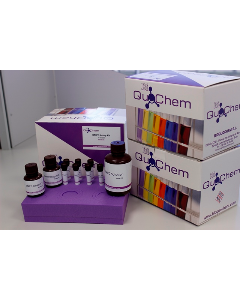 Protein Carbonylation Assay Kit330,00 €Protein Carbonylation Assay Kit 100 tests (96 well plate) Fast and easy method for the detection of Protein carbonylation in biological samples. Oxidative stress may cause reversible or irreversible changes in proteins. Such changes are meant to modulate protein function (redox regulation) or protect against irreversible damage that causes the inactive proteins to accumulate or become degraded. The detection of carbonylated proteins is based on 2,4-dinitrophenylhydrazine (DNPH). the reaction product (DNP) can be detected and quantified spectrophotometrycally at a typical absorption spectrum with a maximum at 365-375nm. Learn More
Protein Carbonylation Assay Kit330,00 €Protein Carbonylation Assay Kit 100 tests (96 well plate) Fast and easy method for the detection of Protein carbonylation in biological samples. Oxidative stress may cause reversible or irreversible changes in proteins. Such changes are meant to modulate protein function (redox regulation) or protect against irreversible damage that causes the inactive proteins to accumulate or become degraded. The detection of carbonylated proteins is based on 2,4-dinitrophenylhydrazine (DNPH). the reaction product (DNP) can be detected and quantified spectrophotometrycally at a typical absorption spectrum with a maximum at 365-375nm. Learn More -
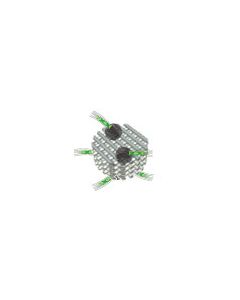
-
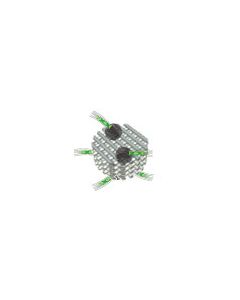
-
 KineticBlue™ Fluorometric Cell Viability Assay280,00 €KineticBlue™ Fluorometric Cell Viability Assay Kit offers a simple, rapid, reliable, sensitive, safe and cost-effective measurement of cell viability. Kinetic Blue™ detects cell viability by utilizing a blue and nonfluorescent dye resazurin, which is conv Learn More
KineticBlue™ Fluorometric Cell Viability Assay280,00 €KineticBlue™ Fluorometric Cell Viability Assay Kit offers a simple, rapid, reliable, sensitive, safe and cost-effective measurement of cell viability. Kinetic Blue™ detects cell viability by utilizing a blue and nonfluorescent dye resazurin, which is conv Learn More -
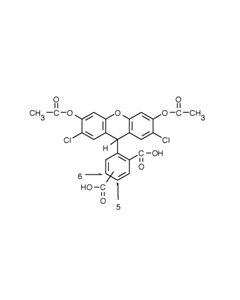 Carboxy-H2DCFDA ROS indicator145,00 €ROS indicator, Ex/Em = 495/529 nm. Carboxy-H2DCFDA [5-(and 6)-Carboxy-2′,7′-dichlorodihydrofluorescein diacetate] is a chemically reduced analogue of fluorescein used as an indicator for reactive oxygen species (ROS) in cells. Upon cleavage of the acetate groups by intracellular esterases and oxidation, the nonfluorescent Carboxy-H2DCFDA is converted to the highly fluorescent 5-(and 6)-carboxy-2',7'-dichlorofluorescein, with additional negative charges that impede its leakage out of the cell. Learn More
Carboxy-H2DCFDA ROS indicator145,00 €ROS indicator, Ex/Em = 495/529 nm. Carboxy-H2DCFDA [5-(and 6)-Carboxy-2′,7′-dichlorodihydrofluorescein diacetate] is a chemically reduced analogue of fluorescein used as an indicator for reactive oxygen species (ROS) in cells. Upon cleavage of the acetate groups by intracellular esterases and oxidation, the nonfluorescent Carboxy-H2DCFDA is converted to the highly fluorescent 5-(and 6)-carboxy-2',7'-dichlorofluorescein, with additional negative charges that impede its leakage out of the cell. Learn More -
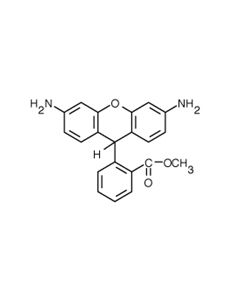 DHR 123 ROS indicator160,00 €ROS indicator, Ex/Em = 507/529 nm. Dihydrorhodamine 123 is the reduced form of rhodamine 123, which is a commonly used fluorescent mitochondrial dye. Dihydrorhodamine 123 itself is non-fluorescent, but it readily enters most of the cells and is oxidized by oxidative species or by cellular redox systems to the fluorescent rhodamine 123 that accumulates in mitochondrial membranes. Dihydrorhodamine 123 is useful for detecting reactive oxygen species including superoxide and peroxynitrite. Learn More
DHR 123 ROS indicator160,00 €ROS indicator, Ex/Em = 507/529 nm. Dihydrorhodamine 123 is the reduced form of rhodamine 123, which is a commonly used fluorescent mitochondrial dye. Dihydrorhodamine 123 itself is non-fluorescent, but it readily enters most of the cells and is oxidized by oxidative species or by cellular redox systems to the fluorescent rhodamine 123 that accumulates in mitochondrial membranes. Dihydrorhodamine 123 is useful for detecting reactive oxygen species including superoxide and peroxynitrite. Learn More -
 H2DCFDA ROS indicator90,00 €ROS indicator, Ex/Em = 495/529 nm. H2DCFDA [2′,7′-dichlorodihydrofluorescein diacetate] is a chemically reduced analogue of fluorescein used as an indicator for reactive oxygen species (ROS) in cells. Upon cleavage of the acetate groups by intracellular esterases and oxidation, the nonfluorescent H2DCFDA is converted to the highly fluorescent 2',7'-dichlorofluorescein. Learn More
H2DCFDA ROS indicator90,00 €ROS indicator, Ex/Em = 495/529 nm. H2DCFDA [2′,7′-dichlorodihydrofluorescein diacetate] is a chemically reduced analogue of fluorescein used as an indicator for reactive oxygen species (ROS) in cells. Upon cleavage of the acetate groups by intracellular esterases and oxidation, the nonfluorescent H2DCFDA is converted to the highly fluorescent 2',7'-dichlorofluorescein. Learn More
